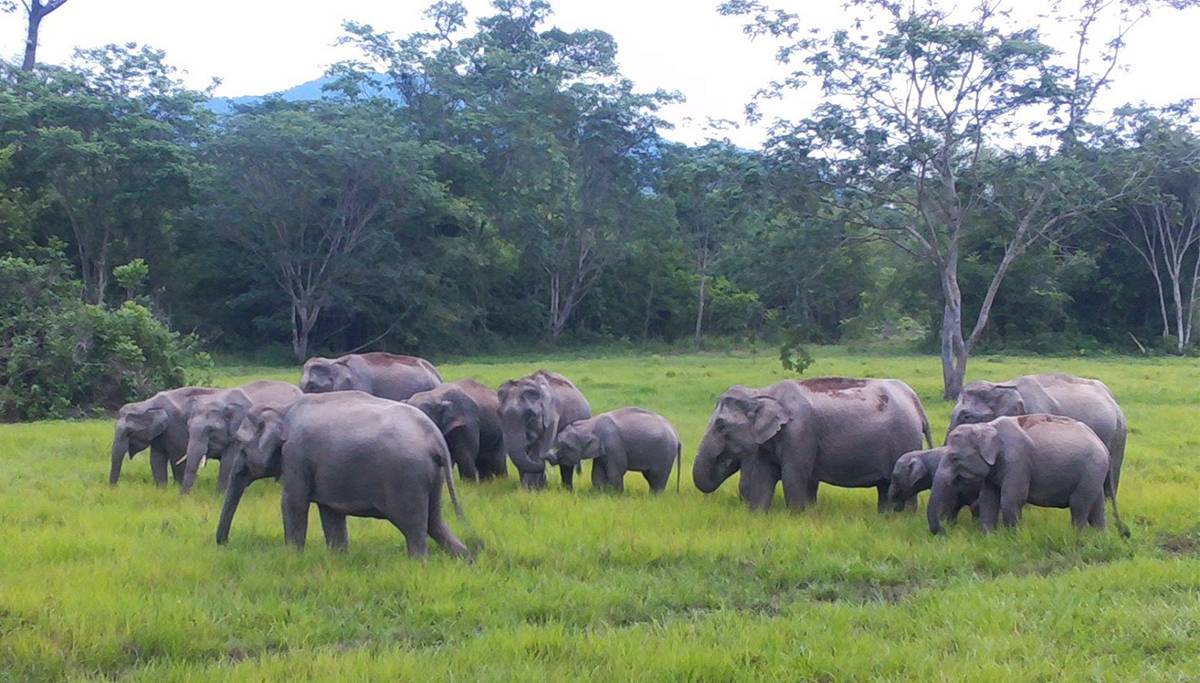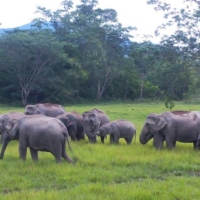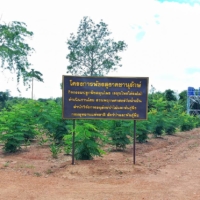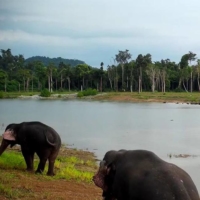The Bajrasudha Gajanurak Project originated from a concern shared by His Majesty King Maha Vajiralongkorn and Her Majesty Queen Suthida, having learned of the conflict between local communities and wild elephants as the animals encroached upon farmland and houses to forage for food that was otherwise inadequate in their natural habitat. Limited food sources have forced wild elephants into such a behavioral pattern, posing risks to the lives of the elephants as well as humans, particularly in five provinces in the eastern corner of Thailand, namely Chachoengsao, Chonburi, Rayong, Chanthaburi and Sakaew. To ensure the successful implementation of this project, their majesties appointed Her Royal Highness Princess Bajrakitiyabha as chair of the committee on the Bajrasudha Gajanurak Project and accepted the project under royal patronage on Aug. 2, 2019.
While the name of the project literally means “an elixir that strengthens elephants to be as strong as diamonds,” the project’s true objective equally focuses on the welfare of wild elephants and humans alike, and to strike that delicate balance where both species can comfortably exist side by side.
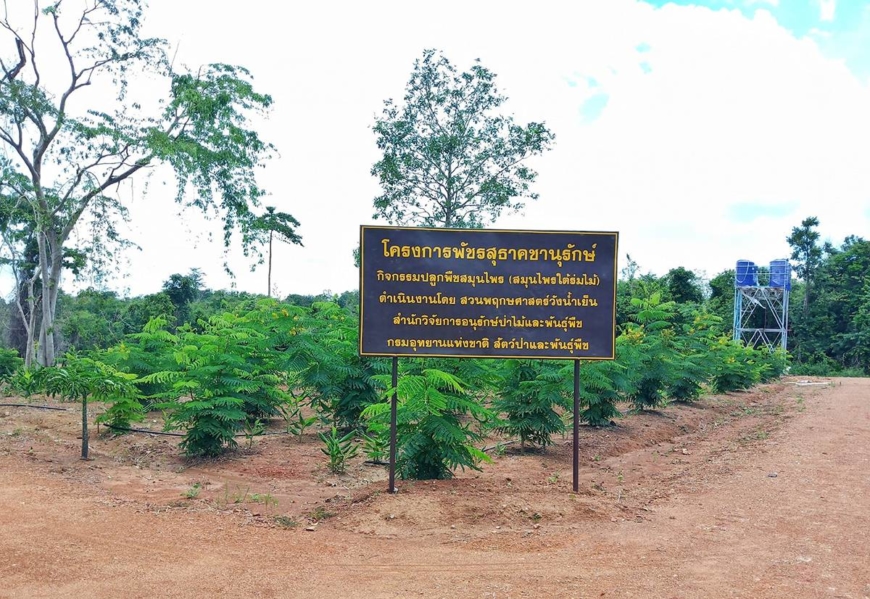
The project also aims to create a natural setting where local people and the pachyderms can share resources in nearby habitats through safe, lasting and practical solutions that can be maintained by the communities themselves. It seeks to build on the lifelong work of His Majesty King Bhumibol Adulyadej The Great and Her Majesty Queen Sirikit The Queen Mother, on the conservation of natural resources and improvement of living standards for communities adjacent to forests in the five specified provinces.
To achieve this aspiration, the areas bordering forests in the provinces have been divided into three zones. The zoning approach creates a sustainable solution for coexistence between humans and wildlife, as natural separations enable seamless transitions between the two worlds. Therefore, the risk of possible confrontations between the two species is significantly reduced and becomes manageable. The zones include a forest conservation area as a natural dwelling for wild elephants, a buffer or in-between zone for both animals and humans and a community zone. Since the start of the project, careful action plans have been implemented and can be summarized as follows.
Forest conservation zones for elephants contain designated water sources for wild elephants within this zone to dissuade them from venturing out of their natural habitat in search of food. The aim is to improve and to build a total of 60 large, midsize and small water sources, with a combined capacity of approximately 1,800,000 cubic meters. Thus far, 23 water sources have already been established.
In addition, the reforestation efforts in the Khao Ang Rue Nai Wildlife Sanctuary in Chachoengsao province and the Khao Soi Dao Wildlife Sanctuary in Chanthaburi province, as well as other forest conservation areas, have indeed helped replenish natural food sources for wild elephants. Fifteen plots of grassy meadows now grow on a total area of 448 hectares. Other suitable food crops and edible flora have also been carefully planted for the wild elephants and their wild peers. These include lush bamboo forests, delectable local fruits such as mangoes and bananas, as well as artificial salt licks in the natural corridor connecting Khao Chamao-Khao Wong National Park in Rayong province with Khao Ang Rue Nai Wildlife Sanctuary in Chachoengsao province
Buffer zones are natural corridors connecting different ecosystems that have been created to serve as temporary dwelling places for wild elephants. These areas dissuade elephants from venturing out to forage in local communities, and from there they would be safely guided back to the forest conservation zones. The buffer zones offer moist, grassy meadows and food sources for wild elephants. Water flow is controlled by check dams constructed to keep the land moist. As a result, the buffer zones have been transformed into rich, nutritious food reserves for not only elephants, but all sorts of wildlife, be they banteng, gaur or Indian bison and barking deer. Some community forests have even been converted into buffer zones as they host a wide range of biodiversity and crop species, useful for both humans and wildlife. These include Dipterocarpus alatus, rattan and paduak, among others. In addition, medicinal plants such as red galangal, pepper, cardamom and water tubes, have been included in the buffer zones for household use. Strong scented plants that elephants find repugnant, such as climbing wattle and cassia, are cleverly added at the boundary of the zones to act as a natural perimeter to deter elephants from straying into communities and damaging homes. Comprehensive elephant surveillance systems equipped with artificial intelligence technology are set up within the buffer zones. These are called Gajanurak Operation Centres and can track and monitor elephant movements via automated cameras. When the surveillance system detects elephants, an alert signal will be sent via the Line chat application to local villagers and the volunteer team tasked with returning wild elephants to their natural habitat. The first Gajanurak Operation Centre was set up in Khao Chamao-Khao Wong National Park, Rayong province, with personal funds from the king. Since then, a similar facility has been established in Khao Ang Rue Nai Wildlife Sanctuary, Chachoengsao province, to record and collect information from other automated surveillance systems set up in the five specified provinces, and to create a database for future collaboration among related agencies.
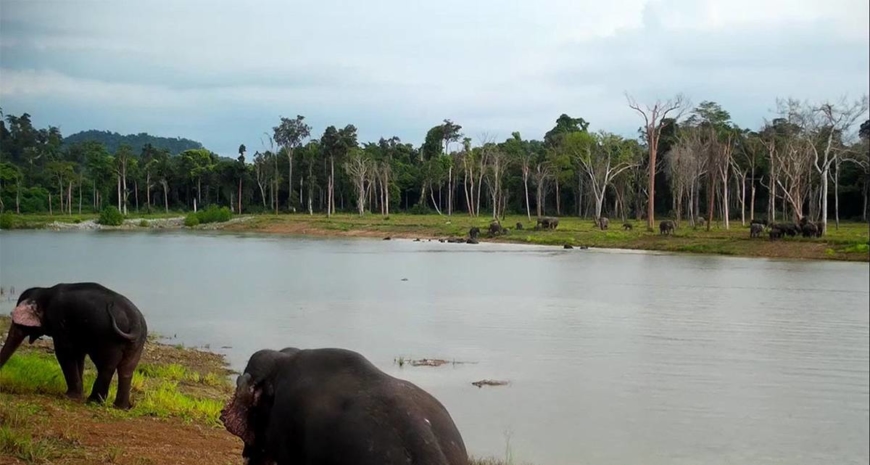
The communal zone designation focuses on community development as well as raising awareness and creating understanding among villagers about the behavior of wild elephants. This is necessary as it helps encourage participation with authorities in reducing the risk of confrontation with wild elephants. In addition, community zones support training for volunteers to learn how to properly rehabilitate wild elephants and return them to their habitat. Eight “Gajanurak Villages,” or pilot villages, have been set up toward this end, with an additional 43 within the network to expand the activities of the pilot villages to an even broader audience. The network currently includes 51 villages, or 17% of the 299 affected by foraging wild elephants. Additionally, their majesties the king and queen have made personal contributions to establish the Gajanurak Fund and to purchase elephant surveillance equipment, alarm systems, radio communications systems and lights for volunteers tasked with alerting villagers of any possible elephant confrontations.
Such community development activities have deepened villagers’ understanding of nature preservation and coexistence with wildlife. They have also been empowered with skill sets to improve their livelihoods as well as the management of village funds. In conjunction with strengthening the capacity of these communities, there have also been efforts to restore water sources for villagers in all five of the affected provinces so they store enough for consumption and agriculture to maintain a sustainable livelihood. Through such efforts, the villagers have become united and now share with one another their knowledge of alternative livelihoods, including the concept of phasing out single cropping for multiple cropping. As a result, villagers have established 33 groups or associations to assist one another in earning income from different sources. These include medicinal herbs, basketry and food processing in the Gajanurak Villages and network villages. Such congregations serve as models for sustainable adaptation to life with natural surroundings and wildlife. This approach enhances communities’ quality of life while offering them peace of mind and protection from wild animals through alert and surveillance systems.
The implementation of the Bajrasudha Gajanurak Project thus far has made progress in all aspects as it seeks to solve problems at their origins in a sustainable manner as advocated by His Majesty King Bhumibol Adulyadej The Great. The key to future success will be a commitment from all stakeholders, particularly local ownership. Nevertheless, since the conflict between elephants and communities has been a long-standing issue, and wild elephants have grown accustomed to foraging on villagers’ farmland, it will naturally take time to change these elephants’ behavior and assist their return to the forest.
Brewing an elixir that works is never easy. Hopefully, the current success of the Bajrasudha Gajanurak Project will inspire many more to quest for their own magic potion that will make a difference.
Following his retirement from the army, H.E. Gen. Chalermchai Sitthisad was appointed privy councillor on Oct. 2, 2018, and currently oversees various projects under royal patronage, including the Bajrasudha Gajanurak Project. Sitthisad serves on the Executive Committee of the Ananda Mahidol Foundation and the Committee on Education Scholarships Under Royal Patronage. Prior to this, he served the military in a number of key positions in the Royal Thai Armed Forces, including commander of the Armed Forces Section on Specialised Warfare, assistant to the chief commander of the armed forces and chief commander of the armed forces.



